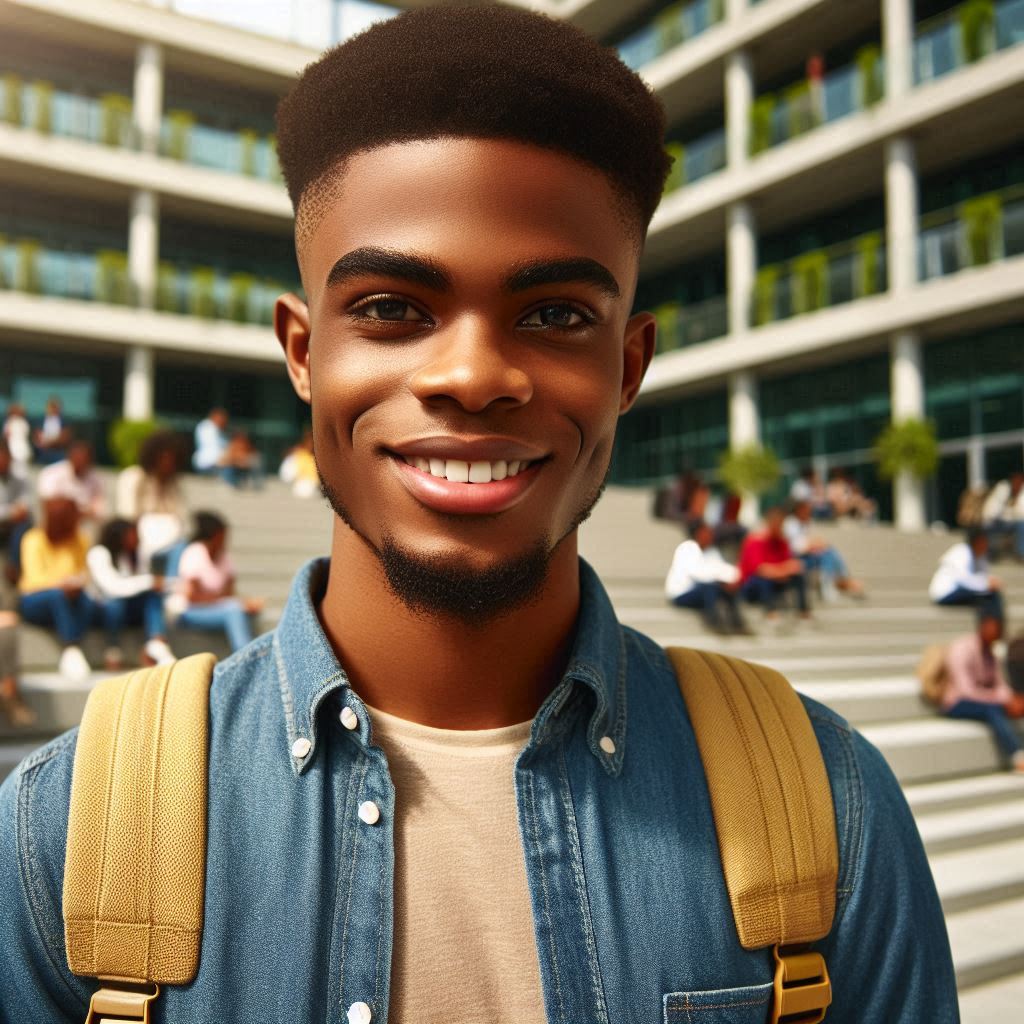Introduction
Special needs students encompass a diverse group requiring tailored educational approaches.
These students may have physical, cognitive, emotional, or sensory challenges that impact their learning processes.
Understanding their unique needs is crucial in providing effective education.
Physical and health education plays a pivotal role in the development of special needs students.
It goes beyond mere physical activity; it encompasses holistic well-being, including emotional and social aspects.
For special needs students, physical education promotes physical fitness, motor skills development, and overall health improvement.
These benefits are particularly significant as they contribute to their quality of life and enhance their ability to participate actively in daily activities.
Health education, on the other hand, empowers special needs students with knowledge and skills for making informed decisions about their health.
Topics such as nutrition, hygiene, and safety are tailored to their specific needs, ensuring practical relevance and applicability in their lives.
Moreover, physical and health education fosters social interaction and communication skills among special needs students.
It provides structured opportunities for them to engage with peers, enhancing their social integration and confidence.
Beyond the physical and social benefits, engaging in physical activities improves special needs students’ concentration, reduces stress levels, and enhances their overall mental well-being.
These outcomes are crucial for optimizing their learning potential and overall academic achievement.
In essence, physical and health education is not just an extracurricular activity but an integral component of the educational framework for special needs students.
It supports their physical development, enhances their understanding of health concepts, and promotes social inclusion.
By addressing their unique needs through tailored programs, educators can empower special needs students to lead healthier, more fulfilling lives.
Understanding Special Needs Students
Special needs students encompass a wide range of conditions that can affect their learning and development.
It is essential for educators to have a deep understanding of these students to provide appropriate support in physical and health education.
Different types of special needs students
- Autism Spectrum Disorder (ASD): Students with ASD may have challenges with social interaction and communication, as well as repetitive behaviors.
- Attention Deficit Hyperactivity Disorder (ADHD): Students with ADHD may struggle with focusing, impulse control, and hyperactivity, impacting their participation in physical activities.
- Physical Disabilities: Students with physical disabilities may have limitations in mobility or coordination, affecting their ability to engage in certain physical exercises.
- Intellectual Disabilities: Students with intellectual disabilities may have difficulties with reasoning, problem-solving, and understanding instructions in physical education classes.
- Sensory Processing Disorders: Students with sensory processing disorders may have sensitivities to sensory stimuli, making it challenging for them to participate in activities that involve loud noises or bright lights.
Challenges they may face in physical and health education
- Accessibility: Ensuring that the physical education facilities and equipment are accessible for students with disabilities is crucial to their participation.
- Communication: Some students may have challenges in verbal communication, requiring alternative methods of instruction and understanding in physical education classes.
- Individualized Instruction: Special needs students may require personalized modifications and adaptations to activities to meet their unique needs and abilities.
- Social Interactions: Some students may have difficulties with social skills and peer interactions, impacting their teamwork and collaboration in physical education settings.
- Sensory Sensitivities: Students with sensory sensitivities may struggle with loud noises, bright lights, or certain textures, affecting their engagement in physical activities.
In fact, understanding the diverse needs of special education students is essential for creating an inclusive and supportive environment in physical and health education classes.
By recognizing and addressing the challenges they may face, educators can help special needs students thrive and reach their full potential in physical activities.
Read: Role of Physical Education in Nigerian Health System
Adapted Physical Education
Inclusive physical education is an essential part of a well-rounded education for all students, including those with special needs.
Physical education provides numerous benefits, such as promoting physical fitness, developing social skills, and enhancing overall well-being.
However, for students with special needs, traditional physical education programs may not always be suitable. That’s where adapted physical education comes in.
Definition and Purpose
Adapted physical education is a specialized program designed to meet the unique needs of students with disabilities.
The primary goal of adapted physical education is to provide students with disabilities the opportunity to participate in physical activities that are appropriate for their individual abilities.
By modifying the curriculum, equipment, and instructional strategies, adapted physical education instructors can create a safe and inclusive environment where students with special needs can engage in physical activities and develop essential motor skills.
Adapted physical education programs focus on promoting physical fitness, improving coordination, enhancing motor skills, and building self-confidence.
Strategies for Adapting Physical Education for Special Needs Students
- Individualized Instruction: Tailor the physical education curriculum to meet the specific needs and abilities of each student.
This may involve modifying activities, adjusting equipment, or providing additional support. - Use of Visual Aids: Incorporate visual aids such as pictures, diagrams, or videos to help students understand and follow instructions during physical activities.
- Peer Support: Encourage peer interaction and collaboration by pairing students with special needs with peer buddies who can provide assistance, motivation, and encouragement.
- Adaptive Equipment: Utilize adaptive equipment such as specialized sports equipment, wheelchairs, or communication devices to accommodate students with physical disabilities and help them participate in activities.
- Modified Rules: Adapt rules and guidelines to make physical activities more accessible and enjoyable for students with special needs.
This ensures that all students can actively participate and experience success. - Structured Routine: Establish a consistent and structured routine during physical education classes to help students with special needs feel comfortable and confident in the learning environment.
- Positive Reinforcement: Use positive reinforcement techniques, such as praise, rewards, and encouragement, to motivate and empower students with special needs to participate actively and engage in physical activities.
- Collaboration with Support Staff: Work closely with support staff, including special education teachers, paraprofessionals, and therapists, to ensure that students with special needs receive the necessary support and accommodations during physical education classes.
- Adapted Games and Activities: Modify traditional games and activities to suit the needs and abilities of students with special needs.
This allows all students to participate in a variety of physical activities and experience success. - Progress Monitoring: Regularly monitor and assess the progress of students with special needs in physical education classes.
Use feedback to adjust instruction, set goals, and track improvements over time.
Read: Secretarial Education Curriculum in Nigeria

Health Education for Special Needs Students
Importance of Teaching Health Education to Special Needs Students
Health education is essential for special needs students as it helps them make informed decisions about their health.
It empowers students to take control of their well-being and develop healthy habits that can improve their quality of life.
By teaching health education, special needs students can learn how to manage their conditions effectively and prevent health complications.
Health education also promotes self-awareness and confidence, which are crucial for individuals with special needs to advocate for themselves.
Furthermore, it can enhance social skills by teaching students how to communicate their health needs and collaborate with others.
Strategies for Making Health Education Accessible for Special Needs Students
- Personalized Learning Plans: Tailor health education lessons to meet the specific needs and abilities of each student.
- Visual Aids: Use visual aids such as charts, diagrams, and videos to help students understand complex health concepts.
- Hands-On Activities: Engage students in hands-on activities that allow them to apply health lessons in real-life situations.
- Simplified Language: Use clear and concise language to explain health information in a way that is easy for students to understand.
- Peer Support: Encourage peer support by pairing students with special needs with classmates who can help them with health education tasks.
- Incorporate Technology: Utilize technology such as educational apps and online resources to enhance health education for special needs students.
- Regular Feedback: Provide regular feedback and reinforcement to help students track their progress and stay motivated to learn.
- Collaboration with Parents and Healthcare Providers: Work closely with parents and healthcare providers to ensure that students receive the necessary support and resources for learning health education.
- Promote Inclusivity: Create a supportive and inclusive environment where all students, including those with special needs, feel valued and respected.
- Continuous Professional Development: Regularly update teaching strategies and techniques to better meet the evolving needs of special needs students in health education.
Read: Curriculum Overview: Business Education in Nigeria
Inclusive Practices in Physical and Health Education
Physical and Health Education is essential for all students, including those with special needs.
Inclusive practices in these areas not only provide numerous benefits but also promote a sense of belonging and acceptance among all students.
Benefits of Inclusive Practices for Special Needs Students
- Improved physical health: Inclusive activities help special needs students stay active and maintain their overall health.
- Social development: Inclusive practices foster social interactions and relationships among students of all abilities.
- Emotional well-being: Participating in inclusive activities boosts self-esteem and promotes a sense of accomplishment.
- Enhanced motor skills: Inclusive exercises help special needs students improve their coordination and motor skills.
- Increased confidence: Inclusive practices provide a supportive environment where students can build confidence and self-belief.
Examples of Inclusive Activities and Exercises
- Adaptive sports: Special needs students can participate in adapted sports such as wheelchair basketball or seated volleyball.
- Team building activities: Inclusive team-building exercises promote collaboration and cooperation among students with different abilities.
- Yoga and meditation: Mind-body practices like yoga and meditation can benefit students with special needs by promoting relaxation and focus.
- Dance classes: Inclusive dance classes not only improve physical fitness but also allow students to express themselves creatively.
- Aquatic therapy: Water-based activities are beneficial for special needs students as they provide a low-impact workout and sensory stimulation.
Overall, inclusive practices in Physical and Health Education create a supportive and inclusive environment where all students, including those with special needs, can thrive and achieve their fullest potential.
By incorporating these practices into the curriculum, educators can promote equality, diversity, and inclusivity in the classroom.
Read: Online Resources for Nigerian Construction Tech Students
Transform Your Career with Expert Guidance
Get personalized mentorship consulting that’s tailored to your unique path. Our expert advice is actionable and exclusive.
Get StartedSee Related Content: Preparing for Biology Exams: Tips and Strategies
Impact of Physical and Health Education on Special Needs Students
Physical and health education plays a crucial role in the development and overall well-being of special needs students.
By incorporating specific activities and lessons tailored to their individual needs, these students can experience significant improvements in various aspects of their health and well-being.
Improvements in physical health
Participating in physical activities can have a positive impact on the physical health of special needs students.
Regular exercise helps improve their strength, flexibility, and overall cardiovascular fitness.
It also helps in maintaining a healthy weight, which is essential for preventing various health conditions such as obesity and diabetes.
Physical education classes provide a safe and supportive environment for special needs students to engage in physical activities.
These classes are designed to accommodate their unique challenges and limitations, allowing them to participate and reap the benefits of exercise without feeling overwhelmed or discouraged.
Regular physical activity can also help in improving coordination, balance, and motor skills in special needs students.
These skills are crucial for their overall development and can enhance their ability to perform daily tasks independently.
Enhancements in mental and emotional well-being
In addition to physical health benefits, physical and health education can also have a positive impact on the mental and emotional well-being of special needs students.
Engaging in physical activities releases endorphins, which are known to boost mood and reduce feelings of stress and anxiety.
Physical education classes provide special needs students with opportunities to socialize and interact with their peers in a supportive environment.
This can help in improving their social skills, building relationships, and fostering a sense of belonging and inclusion.
Regular exercise has been shown to improve cognitive function and enhance focus and concentration in special needs students.
It can also help in reducing symptoms of depression and improving overall mental health.
In a nutshell, physical and health education plays a significant role in improving the physical health and mental well-being of special needs students.
By providing them with tailored activities and lessons, these students can experience a range of benefits that contribute to their overall development and quality of life.
Conclusion
It is crucial to emphasize physical and health education for special needs students to enhance their overall well-being.
Educators and parents should prioritize these disciplines as they play a significant role in the development of special needs students.
By providing tailored physical activities and health education, we can support special needs students in reaching their full potential.
Encouraging physical fitness and healthy habits can have a positive impact on their physical, mental, and emotional health.
Physical and health education are essential components of a well-rounded education for special needs students.
Let us continue to prioritize these disciplines to ensure the holistic growth and well-being of all special needs students.




